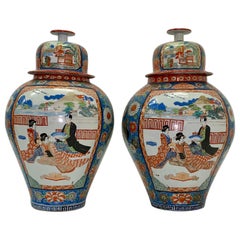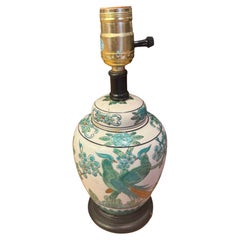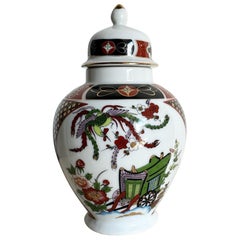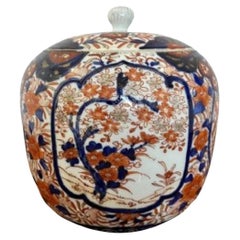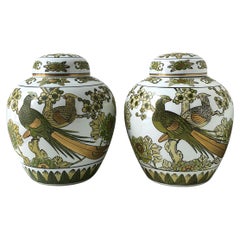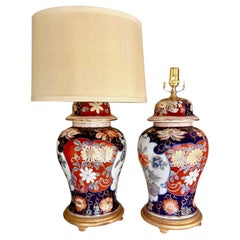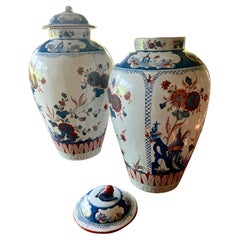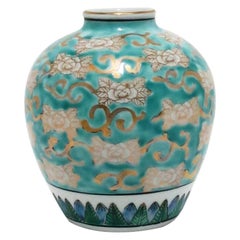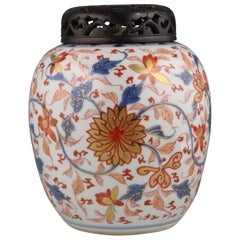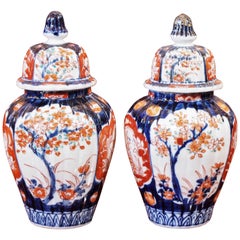Imari Ginger Jar
Antique 1860s Ceramics
Ceramic
Antique 19th Century Japanese Vases
Porcelain
Mid-20th Century Table Lamps
Ceramic
Mid-20th Century Japanese Jars
Porcelain
Early 20th Century Jars
Ceramic
Mid-20th Century Japanese Chinoiserie Vases
Porcelain
Vintage 1930s Japonisme Table Lamps
Ceramic
Vintage 1960s Japanese Table Lamps
Brass
Antique Mid-19th Century French Chinoiserie Urns
Faience
Vintage 1960s Japanese Chinoiserie Vases
Porcelain
Recent Sales
Antique 1730s Chinese Chinese Export Ceramics
Porcelain
Antique 19th Century Japanese Porcelain
Antique 19th Century Japanese Ceramics
20th Century Chinoiserie Table Lamps
Porcelain
Mid-20th Century Japanese Jars
Ceramic
Antique 1880s Japanese Meiji Jars
Porcelain
Antique 1890s Japanese Jars
Porcelain
Early 20th Century Japanese Meiji Porcelain
Porcelain
Antique 1830s Chinese Qing Jars
Stoneware
Antique 1880s French Serving Pieces
Porcelain
20th Century Japanese Jars
Porcelain
Antique Mid-19th Century Dutch Chinoiserie Jars
Delft, Faience
Antique 1890s Japanese Porcelain
Antique 1890s Japanese Meiji Ceramics
Porcelain
Antique 19th Century Japanese Anglo-Japanese Ceramics
Ceramic, Porcelain
Antique Mid-19th Century French Jars
Pottery
Late 20th Century Asian Chinese Export Ceramics
Porcelain
Mid-20th Century Japanese Mid-Century Modern Jars
Porcelain
Antique Mid-19th Century Japanese Ceramics
Ceramic
Early 20th Century Japanese Meiji Table Lamps
Porcelain, Wood
Antique 19th Century Japanese Ceramics
Porcelain
Antique 19th Century Japanese Vases
Porcelain
Japanese Vases
Porcelain
Antique 19th Century Japanese Ceramics
Antique 19th Century Japanese Vases
Antique 1860s Japanese Jars
Porcelain
20th Century Japanese Japonisme Jars
Porcelain
20th Century Chinoiserie Jars
Porcelain
People Also Browsed
Antique 1860s Chinese Ceramics
Porcelain
Antique 19th Century Asian Vases
Porcelain
Early 20th Century Chinese Chinese Export Planters, Cachepots and Jardin...
Porcelain
20th Century Chinese Chinese Export Ceramics
Porcelain
Antique 1880s Chinese Ceramics
Other
Antique Late 19th Century Japanese Vases
Porcelain
Antique Late 19th Century Chinese Qing Ceramics
Ceramic
Antique 1880s Japanese Japonisme Ceramics
Enamel
20th Century Meiji Ceramics
Porcelain
Antique Early 1900s Chinese Qing Ceramics
Porcelain
Antique 19th Century Chinese Jars
Porcelain
Antique Late 19th Century Japanese Porcelain
Porcelain
Antique Late 19th Century Japanese Vases
Porcelain
Antique Early 1900s Japanese Vases
Porcelain
Antique Mid-19th Century Japanese Vases
Porcelain
Antique Late 18th Century Japanese Vases
Porcelain
Imari Ginger Jar For Sale on 1stDibs
How Much is a Imari Ginger Jar?
- How can you tell real Imari?1 Answer1stDibs ExpertApril 5, 2022Imari is a Japanese style of porcelain that originated in the 1600s. The earliest forms are blue and white and are simpler in design than later pieces, which feature intricate designs that often depict flowers, animals or symbolic objects. Many Imari pieces include Japanese character marks or signatures. Experts recommend working with a certified appraiser to authenticate any antique porcelain item. You’ll find a selection of authentic Imari porcelain on 1stDibs.
- What is an Imari pattern?2 Answers1stDibs ExpertApril 5, 2022Imari is a type of porcelain with three colors, blue, rusted red and a bright gold. The pattern is characterized by intricate floral designs. The name Imari comes from the Japanese seaport where pieces of this pattern were shipped to the West. On 1stDibs, find a collection of Imari porcelain pieces from some of the world’s top sellers.1stDibs ExpertApril 5, 2022Imari patterns are those common in Imari ware, a type of Japanese ceramic style popularly exported to Western collectors from the 17th to 19th centuries. They are typically highly decorated, often with reds, blues and other colors. Shop a collection of antique Imari ware from some of the world’s top sellers on 1stDibs.
- What are ginger jars?1 Answer1stDibs ExpertFebruary 22, 2021Ginger jars are blue and white patterned jars that were once used for transporting spices in Ancient China. Today, they serve decorative purposes in homes.
- What is a ginger jar lamp?1 Answer1stDibs ExpertOctober 12, 2021A ginger jar lamp pairs a lovely lampshade with an ornate Chinese spice jar to create a visually appealing lamp. The lampshades can be neutral or colorful to create a beautiful effect. Find a collection of antique and vintage table lamps on 1stDibs.
- 1stDibs ExpertMarch 22, 2022The original purpose of a ginger jar was to transport herbs and spices. It was European traders who gave the highly decorative containers their name. Today, people use ginger jars as decorations. Find a selection of ginger jars on 1stDibs.
- Why is it called a ginger jar?1 Answer
 PAGODA REDOctober 7, 2020
PAGODA REDOctober 7, 2020With a similar shape to the baluster jar, Chinese porcelain ginger jars have a rounded form, with broad shoulders tapering to the base and a narrowed neck topped by a domed lid. The unusual name comes from the export market, wherein salt and spices such as ground ginger travelled West in lidded storage vessels.
- 1stDibs ExpertApril 5, 2022A ginger jar is a typically round jar that widens toward the top, or ‘shoulders’ of the jar. The narrower mouth is topped by a smooth domed lid. A temple jar features a handle or knob on the top of the lid. The jar itself is more curved as well. On 1stDibs, find a selection of ginger jars and temple jars.
 Lotus GallerySeptember 23, 2020
Lotus GallerySeptember 23, 2020Chinese ginger jars were originally made as utilitarian vessels used to store various herbs and spices. Today, they are almost exclusively decorative objects.
 Lotus GallerySeptember 23, 2020
Lotus GallerySeptember 23, 2020Chinese ginger jars are defined by their round, compact shape, wide mouth, short neck, and fitted cover.
 Lotus GallerySeptember 23, 2020
Lotus GallerySeptember 23, 2020A Chinese ginger jar should be fairly compact in size, with a rounded, globular or ovoid body, high shoulders, a wide circular mouth, short neck, and a fitted cover.
